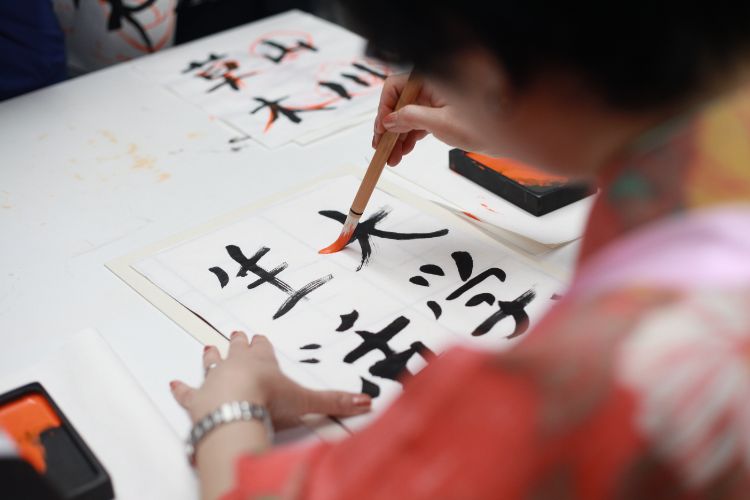The ability to introduce yourself in Japanese is not just a basic language skill; it’s an essential part of engaging with Japanese culture and society. Whether you’re in Japan for travel, work, or study, a proper introduction can pave the way for meaningful interactions. This guide will provide an in-depth look at the nuances of introducing yourself in Japanese, ensuring you can do so confidently and respectfully.
Understanding the Cultural Importance of Introductions

Introductions in Japan are more than mere formalities; they’re woven into the fabric of social etiquette, reflecting respect and humility. A proper introduction sets the stage for the relationship that follows, whether in a personal, professional, or educational context.
Why Introductions Matter
In Japanese culture, the way you introduce yourself can say a lot about you. It’s an opportunity to show respect for the person and the culture. The attention to detail, the bow, the choice of words—all contribute to the first impression you make.
Helpful Hint:
When meeting someone for the first time, a slight bow is more appropriate than a handshake, which is less common in Japan.
The Role of Politeness
Politeness is a cornerstone of Japanese communication. Using the correct level of politeness shows your understanding and respect for Japanese social norms. It’s crucial to adjust your speech according to the context and the person you’re speaking to.
Steps to Introduce Yourself in Japanese
A well-crafted self-introduction in Japanese goes beyond stating your name. It involves expressing your background, your interests, and why you’re in Japan, all while paying attention to linguistic nuances and social cues.
Basic Self-Introduction Phrases
Start with the basics: “はじめまして” (Hajimemashite, Nice to meet you) followed by “私の名前は [Your Name] です” (Watashi no namae wa [Your Name] desu, My name is [Your Name]). This is polite and formal, suitable for almost any situation.
Sharing Your Background
After the initial greeting, share a bit about yourself. Mention where you’re from: “私は [Your Country] から来ました” (Watashi wa [Your Country] kara kimashita, I come from [Your Country]). If you’re in Japan for a specific reason, this is a good time to mention it briefly.
Expressing Your Interests and Intentions
Discussing your interests in Japan or your reasons for learning Japanese can make your introduction more engaging and personal. For instance, “私は日本の文化に興味があります” (Watashi wa Nihon no bunka ni kyōmi ga arimasu, I am interested in Japanese culture) shows respect and curiosity about their culture.
Adapting Your Introduction for Different Contexts
Your self-introduction may vary depending on whether you’re in a professional setting, a casual meetup, or a formal event. Tailoring your introduction to the situation can help establish the right tone for the interaction.
Professional Settings
In business or formal settings, include your position and your affiliation: “私は [Your Company] の [Your Position] です” (Watashi wa [Your Company] no [Your Position] desu, I am [Your Position] at [Your Company]). Follow this with a polite bow, which shows respect and formality.
Helpful Hint:
Exchanging business cards is a key part of professional introductions in Japan. Offer your card with both hands as a sign of respect.
Social Gatherings
At less formal events, you can be a bit more relaxed. Share something personal that might spark a conversation, like a hobby or an aspect of Japanese culture you’re interested in. This approach can make the introduction feel more genuine and inviting.
Casual Encounters
When meeting new friends, you can use a more casual tone. Still, it’s important to be polite. Ending your introduction with “よろしくお願いします” (Yoroshiku onegaishimasu, Please look after me/I look forward to working with you) can help set a friendly tone for the relationship.
Understanding and Using Keigo (Honorific Language)
Keigo, or honorific language, is an essential aspect of Japanese that reflects the hierarchical nature of the society. It’s particularly important in formal and professional settings.
Types of Keigo
There are three main types of keigo:
- 尊敬語 (Sonkeigo, Respectful language) to show respect towards others.
- 謙譲語 (Kenjōgo, Humble language) to humble oneself.
- 丁寧語 (Teineigo, Polite language) for general politeness.
Understanding when and how to use these forms can greatly impact the effectiveness of your communication.
Practical Applications of Keigo in Introductions
Using keigo in your introductions can demonstrate your respect for the person and the culture. For beginners, focusing on teineigo, the polite form, is a good start. As you become more comfortable, incorporating sonkeigo and kenjōgo can deepen your understanding and respect for Japanese language nuances.
Common Mistakes to Avoid
When introducing yourself in Japanese, there are a few common pitfalls that can hinder the effectiveness of your introduction.
Overusing Casual Language
Using overly casual language in formal settings can come across as disrespectful. Always err on the side of formality, especially when meeting someone for the first time or in professional settings.
Forgetting to Bow
The bow is an integral part of Japanese greetings. Neglecting to bow, or bowing inappropriately, can make your introduction seem careless or disrespectful.
Mispronouncing Names
Japanese names have specific pronunciations, and mispronouncing someone’s name can be seen as inattentive. Make an effort to pronounce names correctly, and don’t hesitate to ask for clarification if needed.
Practice and Cultural Immersion
Practicing your self-introduction and immersing yourself in the culture are key to mastering this essential skill. Seek out opportunities to introduce yourself in Japanese, and be open to feedback.
Tips for Practice
Practice your introduction with native speakers, use language exchange apps, or join local language groups. Recording yourself and listening back can also help you improve your pronunciation and delivery.
The Role of Cultural Immersion
Engaging with Japanese culture, whether through media, literature, or interaction with Japanese people, can enhance your understanding and appreciation of the nuances in self-introductions. It’s not just about the language; it’s about connecting on a cultural level.
Mastering the art of introducing yourself in Japanese is a rewarding journey that enhances your communication skills and deepens your cultural understanding. By following these guidelines and embracing the learning process, you’ll be well on your way to making meaningful connections in Japan.
FAQs
Wrapping Up
Introducing yourself in Japanese is a fine blend of language skills and cultural sensitivity. From the respectful bow to the careful selection of politeness levels, every element plays a significant role in forging meaningful connections. Whether it’s a professional setting or a casual meet-up, mastering the art of self-introduction is key to navigating Japanese social landscapes effectively. Remember, it’s not just about the words you choose; it’s about showing respect, expressing genuine interest, and demonstrating your willingness to engage with Japanese culture. As you continue to practice and immerse yourself in the language, you’ll find that these introductions become more than just a formality—they become the gateway to enriching experiences and lasting relationships in Japan.
Additional Resources
- The Official Japanese-Language Proficiency Test Website: Offers comprehensive resources and details about the JLPT, which can help learners gauge their Japanese language proficiency.
- Tofugu: A comprehensive resource for learning Japanese, including cultural insights and language learning tips that are crucial for effective communication and introductions in Japan.
- JapanesePod101: Provides audio and video lessons that are essential for mastering self-introductions and other aspects of the Japanese language and culture.
- Japan Guide: An extensive guide to Japan’s culture, etiquette, and language, perfect for travelers and language learners looking to immerse themselves in Japanese society.
